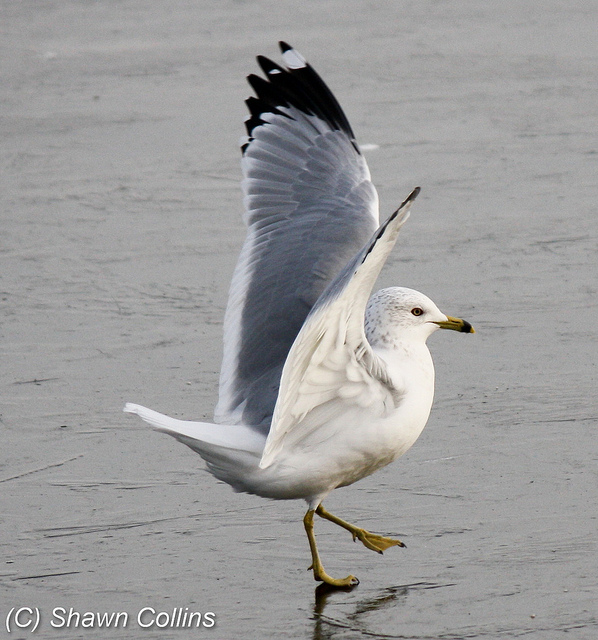
16 December 2011
Black-headed gulls at Moraine State Park are just two of the unusual gulls in the state this week. Eastern Pennsylvania birders have reported Iceland and Glaucous gulls from the Arctic, a Franklin’s gull from interior North America, and lesser black-backed gulls from Europe.
These sightings are just the start of something big.
As winter comes to North America, gulls move to open water. Those that breed in the arctic move to openings in the sea ice (called polynyas) but a few fly south and join the flocks of ring-billed and herring gulls at the coasts and on the Great Lakes.
In very cold years the Great Lakes freeze in February and the gulls move south. That’s when they find Pittsburgh.
In early 2007 the weather was extremely cold for several weeks. That February Pittsburgh’s rivers were treated to eight species of gulls at the same time. (We usually have two.) In addition to herring and ring-billed gulls there were Bonaparte’s gulls and five Allegheny County rarities:
- Iceland gull: breeds in the Canadian Arctic Archipelago and on the coast of Greenland, winters on the coast of Greenland in arctic polynyas and sometimes on the coast of western Europe.
- Thayer’s gull: breeds in the Canadian Arctic Archipelago and on the coast of Greenland, winters on the Pacific coast.
- Glaucous gull: breeds on the arctic coasts of Canada and Greenland, winters on the Pacific and Atlantic coasts, Hudson Bay, and on the Great Lakes.
- Lesser black-backed gull: breeds in Iceland, Britain and western Europe, winters on the coasts of Europe and Africa. A few spend the winter on the U.S. Atlantic and Gulf coasts.
- Great black-backed gull: an Atlantic coastal gull that breeds in northern Europe, Iceland, Greenland and along the Canadian and northern U.S. coasts. It’s a year-round resident in the southern part of its range.
There are photos of the 2007 gull event on Geoff Malosh’s website.
Last week ice began forming on western Pennsylvania lakes. Soon one, then two, black-headed gulls showed up at Moraine State Park.
Slowly the ice will thicken. If the weather stays cold in January — really cold — Lake Erie will freeze and more gulls will come south to Pittsburgh.
Perhaps they’ll bring some rare friends with them.
That’s why gull watchers love ice.
(photo of a ring-billed gull on the ice at Pymatuning by Shawn Collins)